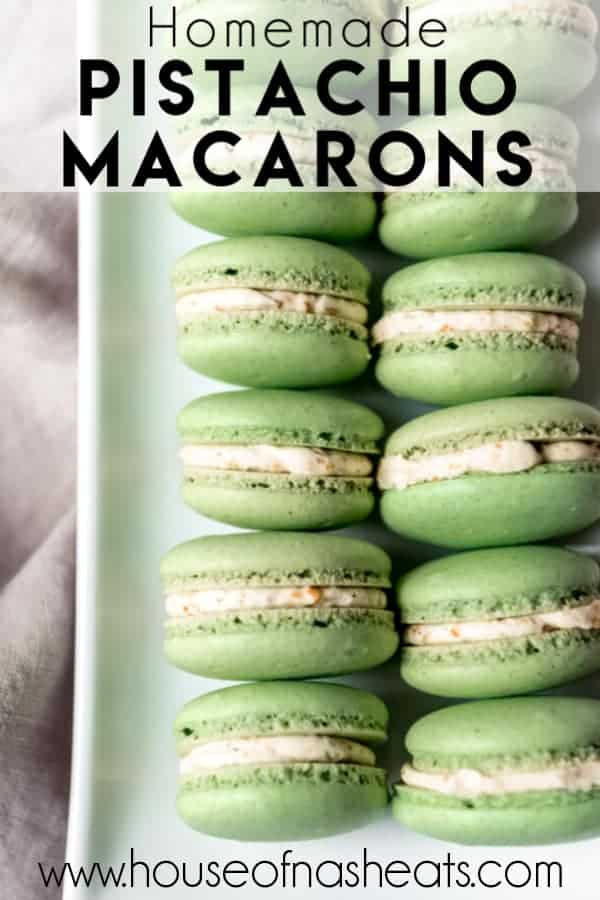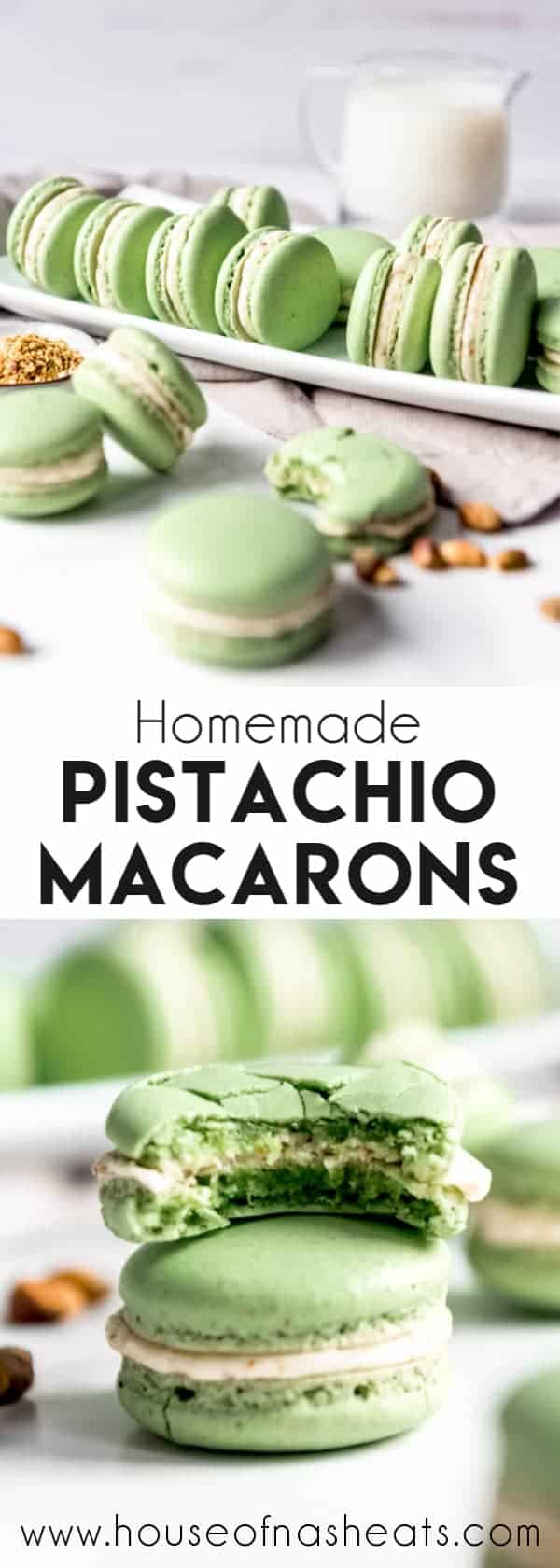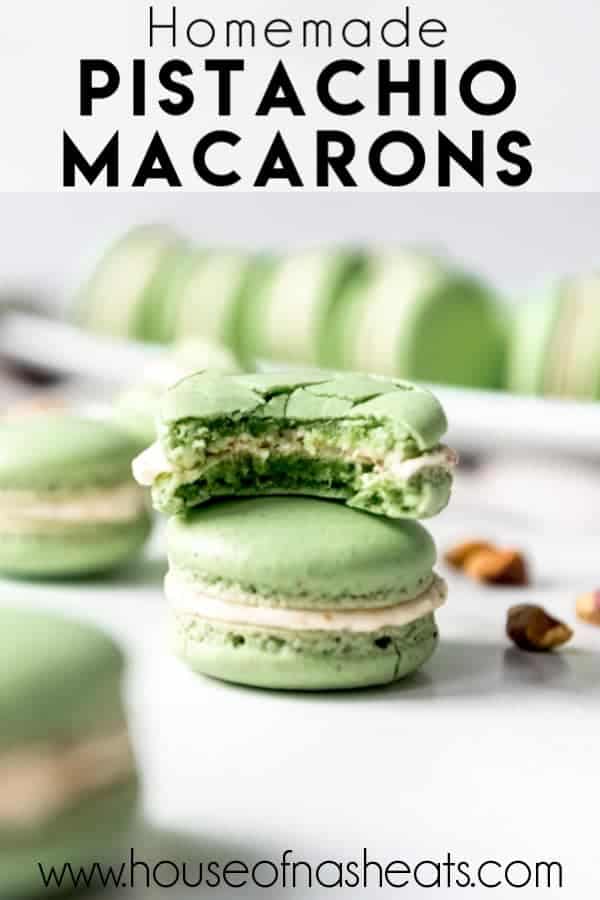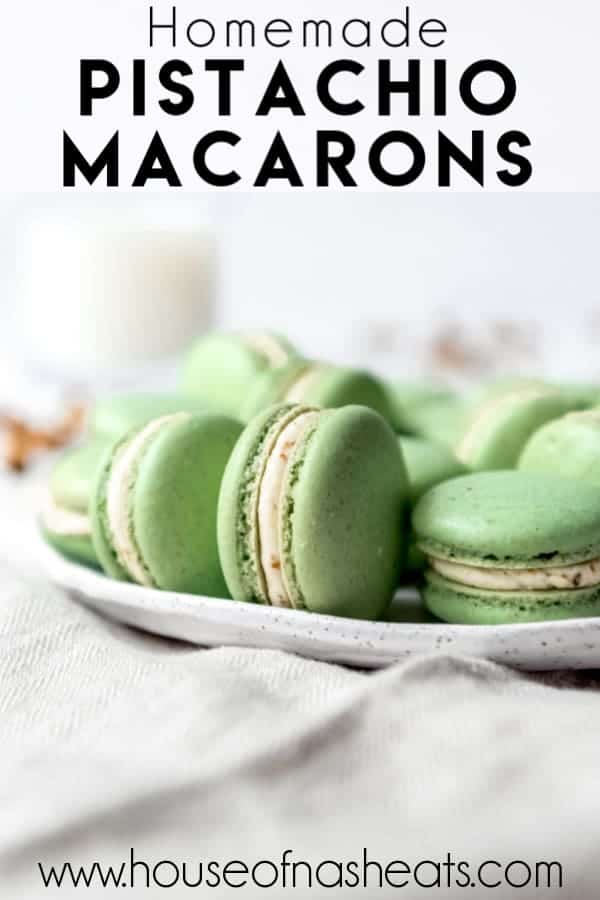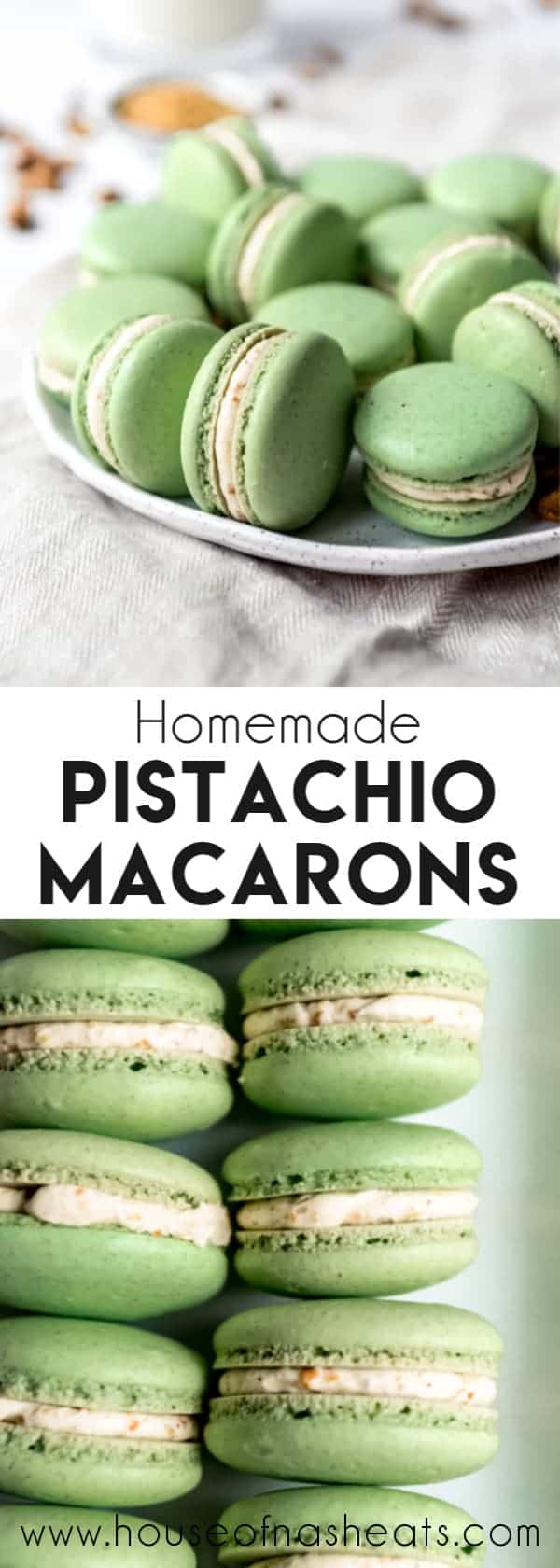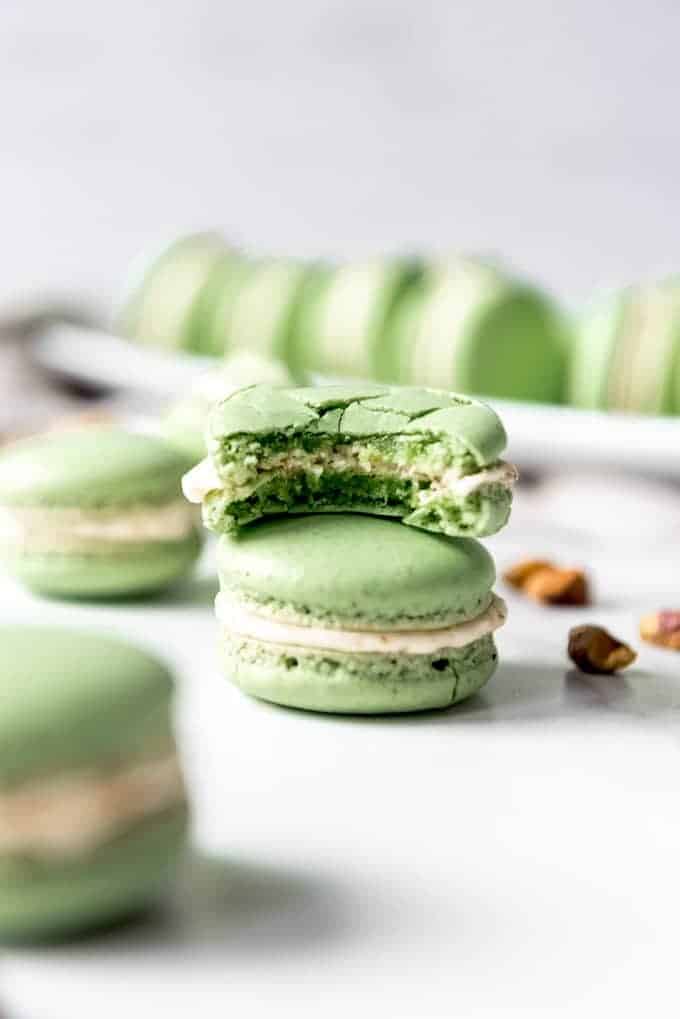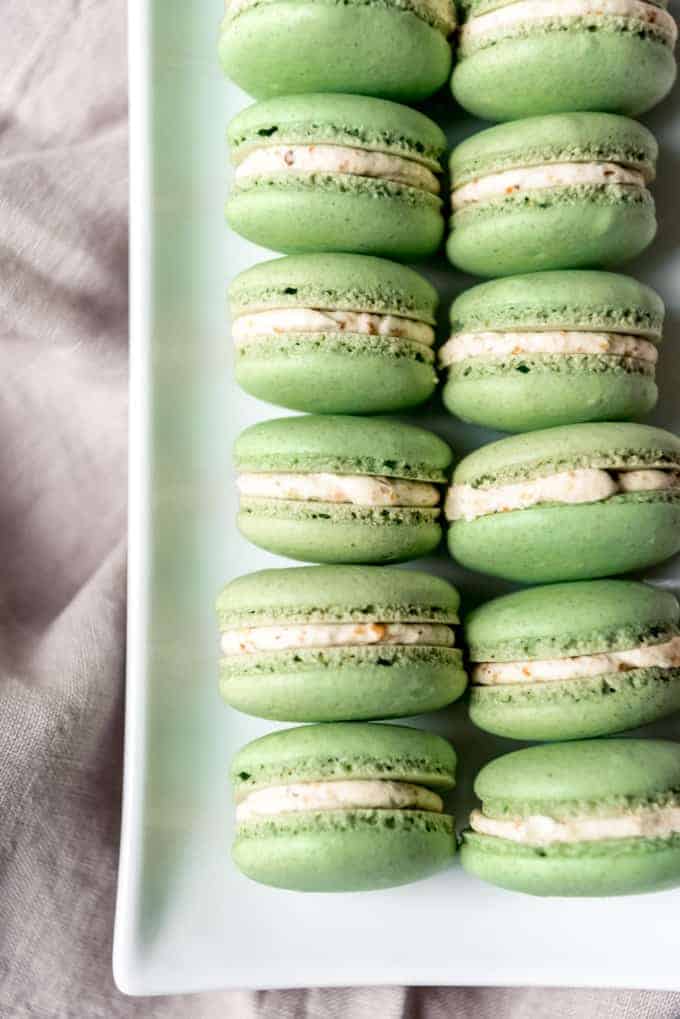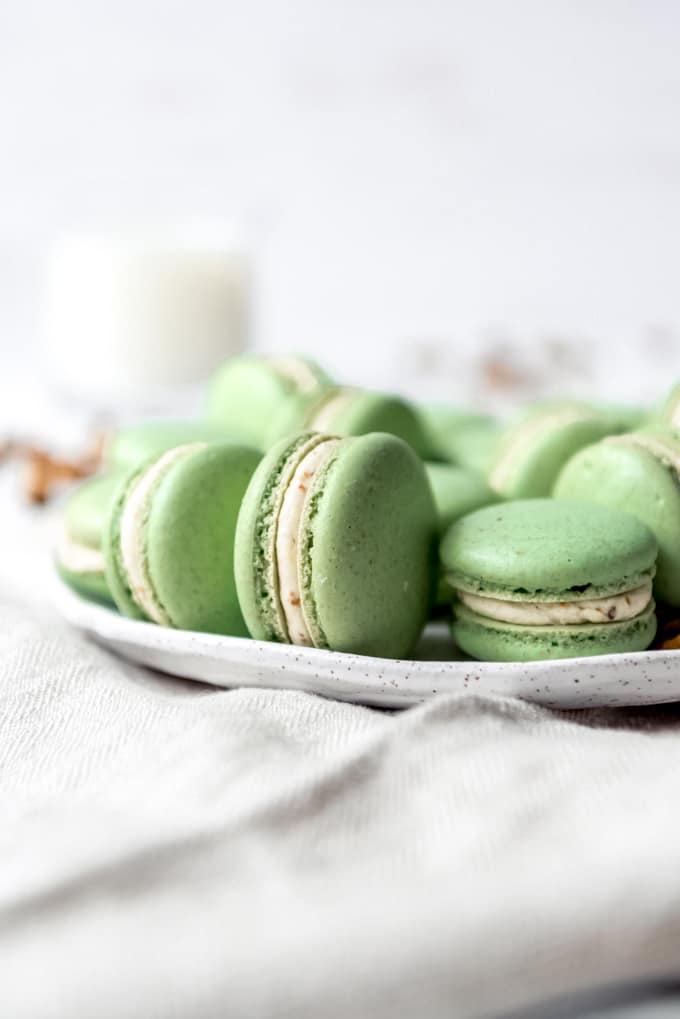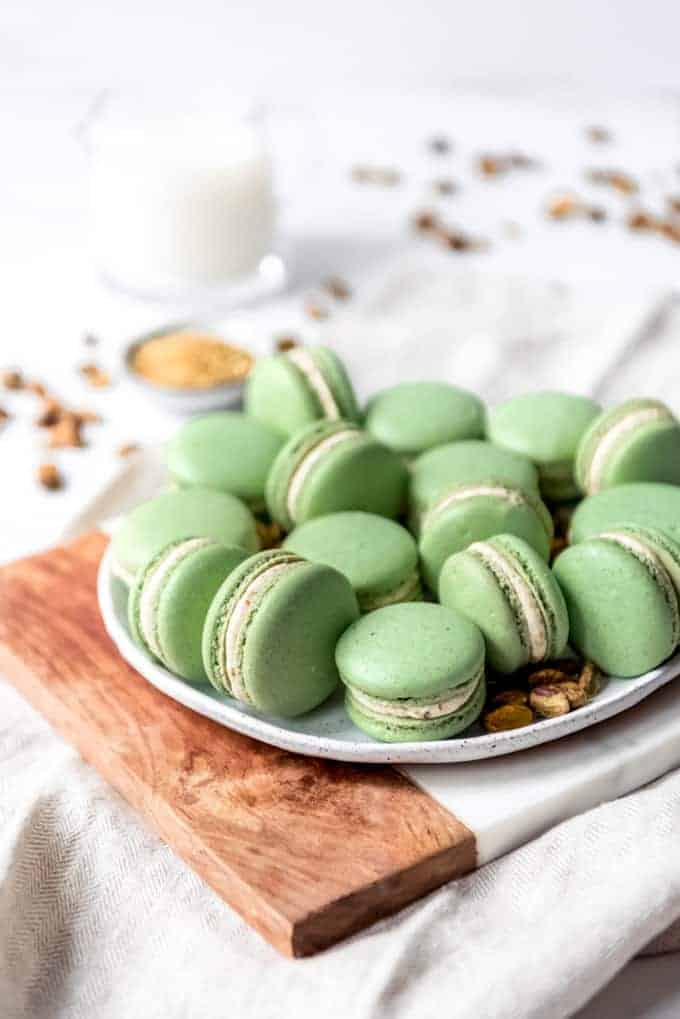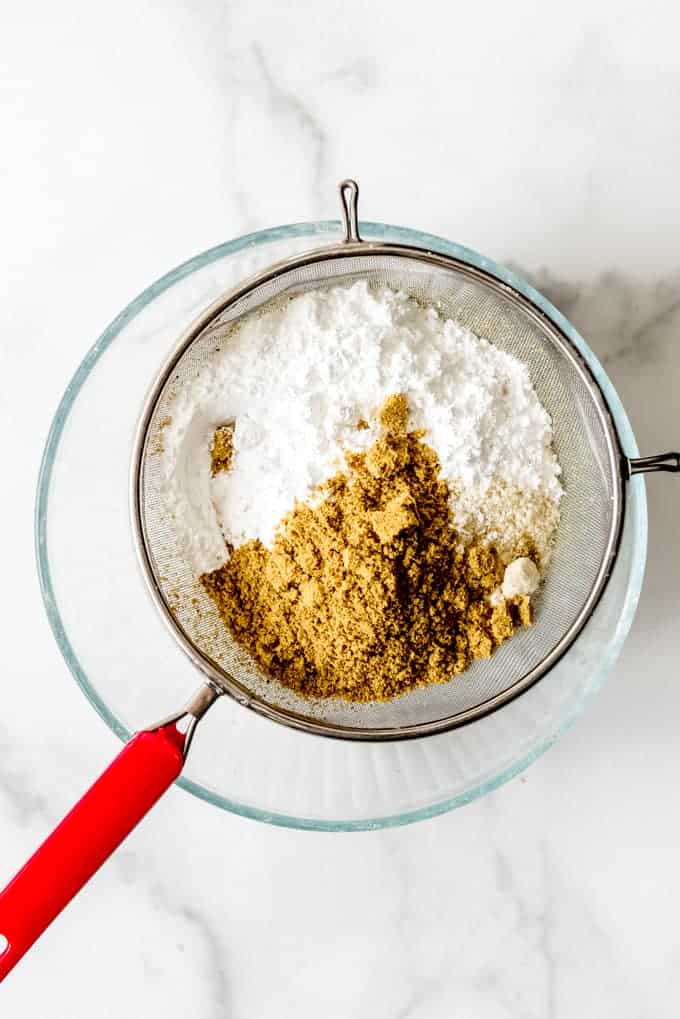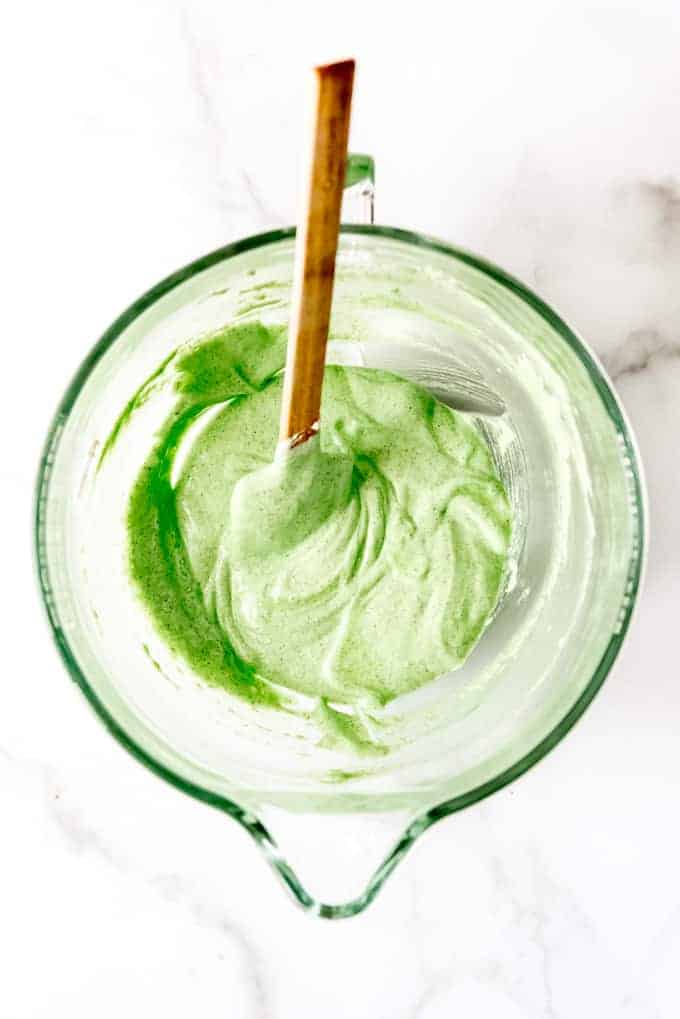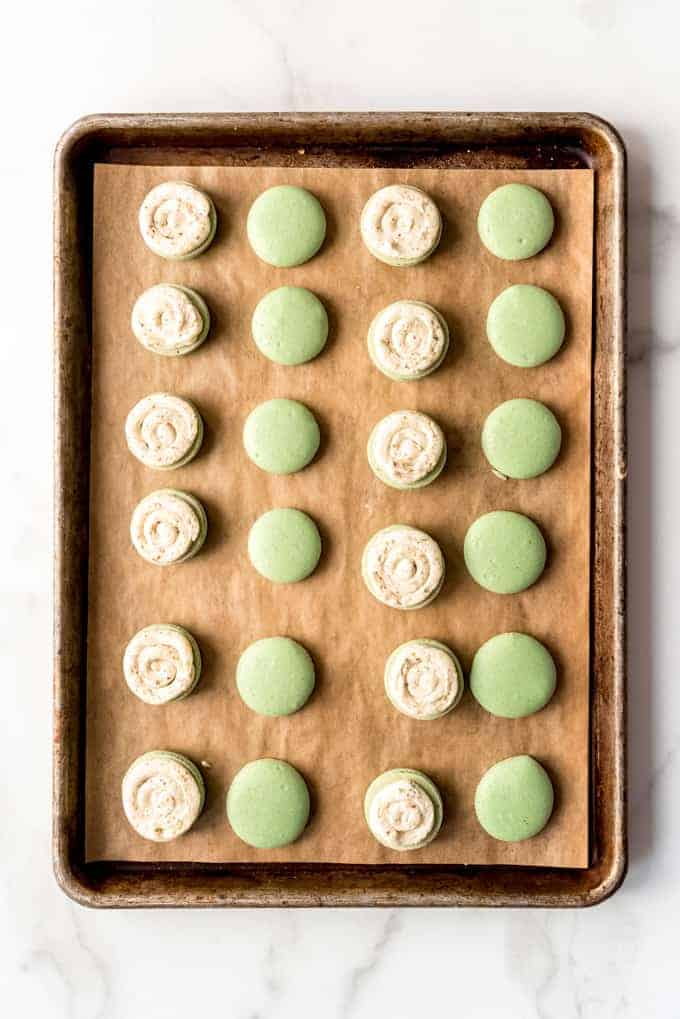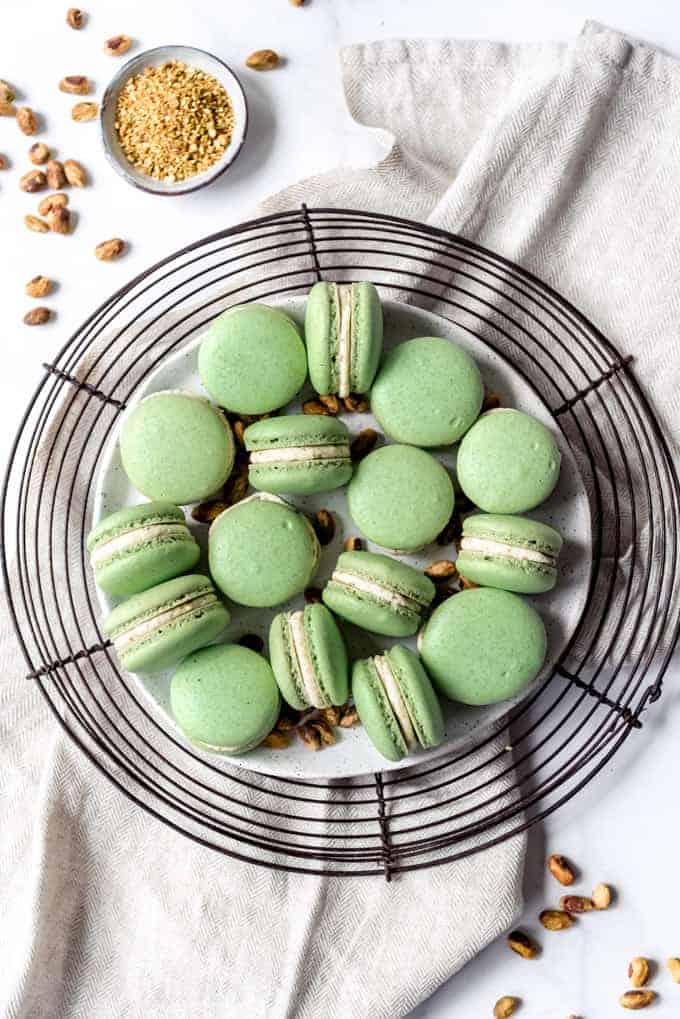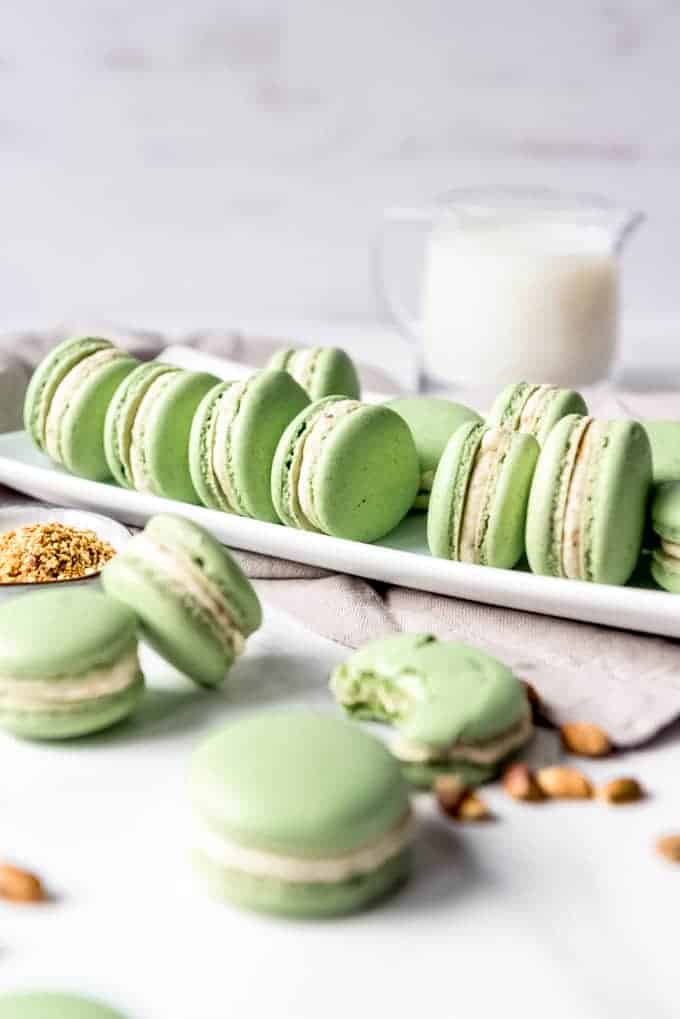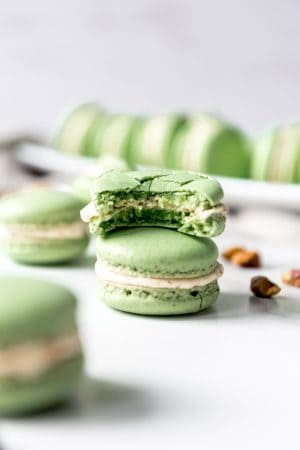I’m slightly obsessed with macarons but I die a little at the cost of each one at most bakeries. So I prefer to make them at home! Be sure not to miss my Chocolate Macarons, Lemon Macarons, Peppermint Macarons, or Raspberry Macarons. What flavor should I make next?!
Pistachio Macarons
I always feel like I’m going rogue when I post about macarons because the honest truth is that I don’t weigh my macaron ingredients before making them. Basically every blog post on the internet is going to preach about how macarons are so finicky and there is no possible way to be successful at making them if you skip the food scale and just use measuring cups. Pshaw, I say. A part of me feels the need to apologize since I feel like most classically trained pastry chefs will see me for the imposter that I am when I admit that, but it’s the truth. I’ve made dozens upon dozens of macarons without any formal training, eschewing the scale for good old measuring cups and you know what? They had those coveted little “feet” (the ruffly bottom of a properly made macaron shell), weren’t hollow in the middle, and turned out delicious. So there. These are easy to make pistachio macaroon cookies will impress everyone and you’ll wonder why you ever bought them from the store in the first place. Save time and money making these soft and crisp little cookies at home and show off the culinary skills you didn’t even know you had. Macaron recipes are often regarded as one of the more difficult recipes to master, but you’ve got this! Although I will keep your secret if you don’t want your friends to know that it’s actually really ridiculously simple and like only 5 ingredients to make these impressive and scrumptious pistachio macarons.
How to make pistachio flour for macarons
All of my macaron recipes have pretty much the same ingredient list of almond flour, powdered sugar, granulated sugar, and egg whites. This one is just a little different in that I replace some of the almond flour with homemade pistachio flour that I ground up myself in my food processor (affiliate link). Save yourself the hassle and buy a bag of already shelled, roasted pistachios to make your almond flour. Costco sells big bags of them and they are great for snacking. Dump the roasted pistachios into your food processor (affiliate link) and pulse until they are finely chopped, but stop before they turn into a paste which can happen if you process them too far. Then sift the pistachio flour through a fine mesh sieve to separate any larger bits of pistachio that didn’t get chopped finely enough so you have enough of the super-fine pistachio flour to use for this recipe. The larger bits can be chopped up more or just used as is in the pistachio buttercream filling.
How to Make Pistachio Macarons
Sifting. My first key to macaron success to is sift the almond flour, pistachio flour, and powdered sugar together TWICE through a fine mesh sieve. Not only does this help lighten the mixture and evenly combine the ingredients, but it also gets rid of larger bits of almond and pistachio meal. For me, this is the most tedious part of making macarons. It can take a while to sift everything, but it’s one of my best tips for perfect macarons on your first try. Beat the egg whites. In a large, clean bowl, beat aged egg whites on medium speed until they are frothy, about 1 minute. I always use my KitchenAid with a whisk attachment for this part of things, but you could do it with a hand mixer instead. I’ve had the best, most consistent success with macarons when I use aged egg whites, although I don’t think they are totally necessary. To age egg whites, separate the whites and yolks, then put the whites in the fridge overnight. The next day, let them sit out on the counter for 1-2 hours before making the macarons. Honestly, I don’t always have time for this and will sometimes skip the overnight period in the fridge, but I always let the egg whites sit out for 1-2 hours so they really are room temperature at the very least. Gradually add in the granulated sugar, about 1 tablespoon at a time, whisking for 20 seconds or so after each addition, until all of the sugar has been added. Continue to whisk on medium to medium-high speed until stiff peaks form. Don’t overbeat the egg whites (which is why I don’t recommend upping your speed any higher than medium-high) but definitely whisk until when you stop the mixer, the egg whites have a lot of volume and will hold their shape when you lift the beaters out. Fold in the almond and pistachio flour mixture. Some people recommend adding the sifted ingredients ⅓ at a time, but I always just dump it all in and start folding with a sturdy spatula. By “folding” the almond mixture into the stiff egg whites, I mean using the spatula to scrape the stuff at the bottom of the bowl and lift it up on top, repeating until you get a good “lava” consistency. It’s sort of a “j-shape” motion and this part is technically referred to as “macronage”. You will know you have mixed it enough when a thick ribbon of batter flows off your spatula when you hold it up over the bowl. The batter should melt in on itself after about 10 seconds. If it falls off in blobs, you haven’t mixed long enough. If it falls off in a stream and immediately melts in on itself like honey or shampoo, there’s a chance you went too far and overmixed it. Honestly, this step is where most people experience the most trepidation when making macarons for the first time, but don’t let that stop you! I taught a group of 9 teenagers how to make macarons with this technique and every one of them had perfect macaron shells with feet (the ruffly looking edges at the bottom of each macaron shell that are the hallmark of excellent macarons) on their very first try. Pipe the macaron shells. Line two baking sheets with parchment paper or silicone baking mats. Some people like to trace 1 1/2″ circles on the backside of the parchment paper as a guide for piping, and you can even buy special macaron silpat mats for this purpose, but I always just freeform it because that’s how I roll. But either way it’s important not to pipe these directly onto your baking sheets or they will stick. Transfer the macaron batter to a piping bag fitted with a large round tip. Or just put it in a large heavy-duty ziploc bag and cut off one corner. Pipe 1 1/2″ circles a couple inches apart on the paper or mat. Then rap the baking sheet on the counter a few times to help remove any air bubbles in the shells. You can poke air bubbles that form on top with a toothpick if you need to. Let the macarons dry for 30-60 minutes at room temperature. This part is key to getting those “feet” I mentioned earlier. Leaving the macarons out lets the top dry out a bit. I find I often need to open the windows in my house a bit so that a helpful cross-draft can move this part along. You should be able to touch the tops of the macarons without any of it coming off on your finger before they go into the oven. They will feel tacky, but not sticky. If they are still sticky, they haven’t dried enough and you need to wait a little bit longer and maybe place them somewhere where air can circulate around them a bit. Preheat oven and bake. Let the oven preheat for a good 20 minutes at 300 degrees F, then bake one tray of macaron shells at a time for 16-18 minutes. Let the macaron shells cool completely on the baking sheet before attempting to remove them from the baking mats or parchment paper. Make pistachio buttercream filling. While the macaron shells are baking, beat the butter until creamy and smooth in a large bowl using an electric or stand mixer. Add powdered sugar, pistachio flour, and almond extract and beat again until light and fluffy. Spoon the pistachio buttercream into a piping bag, then pipe a small amount on the bottom side of one shell. Sandwich another shell on top to complete the pistachio macaron. Ideally, macarons are best the day after they are made, but I can never wait that long.
Why Should I Sift The Dry Mix Twice?
By sifting the almond mixture twice, you are making sure that there are absolutely no lumps in the mix and that it will be velvety smooth. The smooth texture of macarons is part of what makes them so delicious and famous, so starting the recipe on the right track is always a great idea!
Are Macarons Gluten Free?
Yes! Thanks to macarons being made of almond flour (a naturally gluten-free flour) macaron recipes like this one are completely gluten free! Just make sure that if you have a gluten allergy, you pay close attention to labels for any warning signs of cross contamination.
Can Macarons Be Frozen?
Yes, they can! In fact, macarons freeze very well. Just place them into an airtight storage container and keep them in the fridge for up to a few weeks. When you’re ready to eat them simply take them out and let them come to room temperature on the counter for about 20 minutes before eating.
More Classic Dessert Recipes Like This
Authentic French Fruit Tart Raspberry Chocolate Tart Indiana Sugar Cream Pie Classic Pavlova Recipe
Let me know what you thought with a comment and rating below. You can also take a picture and tag me on Instagram @houseofnasheats or share it on the Pinterest pin so I can see.
